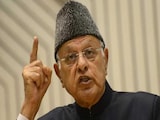- Data shows that out of 243 constituencies, 63 were directly influenced by the Jan Suraaj Party, BSP and AIMIM
- The election results suggest that the three-sided contest significantly favoured the NDA
- The NDA won 202 seats while the Mahagathbandhan was restricted to 35
The Bihar Assembly elections have delivered a verdict reminiscent of the NDA's big victory in 2010, but with new political dynamics. The people of Bihar have chosen the NDA again, giving the ruling alliance 202 seats, while the Mahagathbandhan (MGB) managed to win just 35. The outcome was unexpected for both blocs.
Congress General Secretary KC Venugopal expressed disbelief, saying, "This result is unbelievable for all of us. Not just Congress, even the people of Bihar and our alliance partners are unable to believe it. A 90% strike rate for a party - this has never happened. We are doing a thorough analysis and collecting data from across Bihar."
Beyond the headline numbers, however, a big part of the story lies in the role of smaller parties and their impact on winning margins.
Jan Suraaj Impact
This election was significant because the Jan Suraaj Party, founded by political strategist-turned-politician Prashant Kishor, contested for the first time. Despite not winning a single seat, the party secured 3.4% of the total vote share, emerging as a potential disruptor in Bihar politics. While Jan Suraaj failed to open its account, it ended up being a 'vote-cutter' for both alliances.
Of the 238 seats the Jan Suraaj Party contested, it finished second in one, third in 129, fourth in 73, fifth in 24, and between the sixth and ninth position in 12 seats.
The party dented both the NDA and the MGB. In 33 constituencies, Jan Suraaj's vote share was higher than the margin of victory. Of these 33, the NDA won 18 and the MGB 13.
During the campaign, Kishor said his party would take votes from both blocs, and this is clearly reflected in the results.
BSP And Owaisi Factor
Mayawati's Bahujan Samaj Party (BSP) contested 181 seats, won one and finished second in another. For years, parties in the INDIA bloc have accused BSP of acting as the BJP's 'B-team', and the allegations intensified after the UP Assembly and Lok Sabha elections.
The Bihar results indicate that the BSP hurt the Mahagathbandhan more than the NDA.
In 20 seats, BSP polled more votes than the margin of victory. Of these, 18 were won by the NDA and only two by the MGB, meaning its presence worked to the NDA's advantage in 90% of cases.
Asaduddin Owaisi's AIMIM performed well in Bihar, winning five seats - matching its 2020 performance - and finishing second in one. It also influenced results in nine constituencies, securing more votes than the victory margin. Of these, 67% seats were won by the NDA and 33% by the MGB.
Combined Impact
For the Mahagathbandhan and especially its main constituents, the RJD and the Congress, this has been one of the worst electoral performances in Bihar. The election results suggest that the three-sided contest significantly favoured the NDA. The RJD secured 23.4% of the votes but emerged as the winner in only 25 seats, while the BJP (20.4%) and JDU (19.6%) individually won more than three times as many. This shows the NDA successfully consolidated its vote base while the opposition vote splintered.
Data shows that out of 243 constituencies, 63 were directly influenced by Jan Suraaj, BSP and AIMIM. In these seats, their combined vote share exceeded the margin of victory. Of these, the NDA won 44 (around 70%), while the MGB won 19.
Traditionally, the Mahagathbandhan relies on a consolidated anti-NDA vote bank. But this election saw a three-way fragmentation: the BSP drew Dalit votes, AIMIM consolidated Muslim votes, and Jan Suraaj attracted youth and development-oriented voters. This division in the opposition vote helped the NDA convert tight contests into decisive victories.













